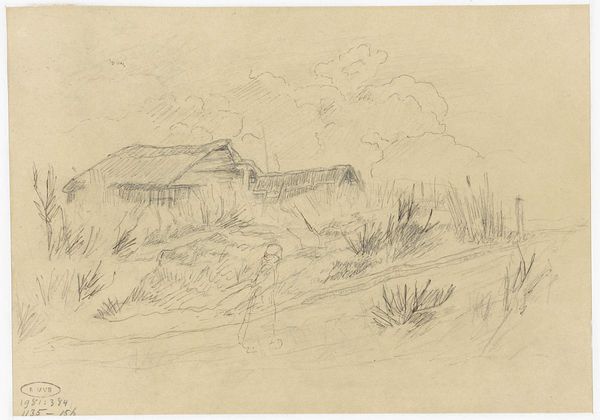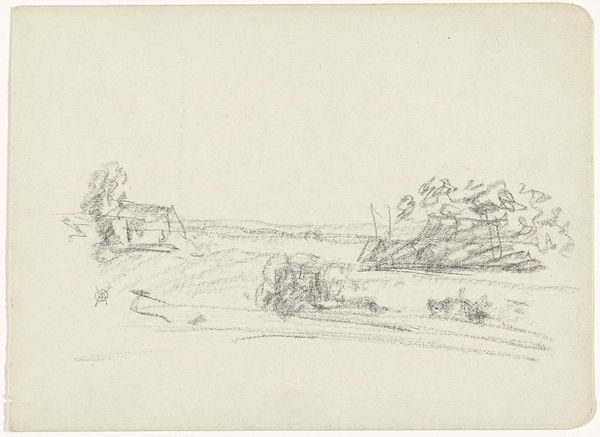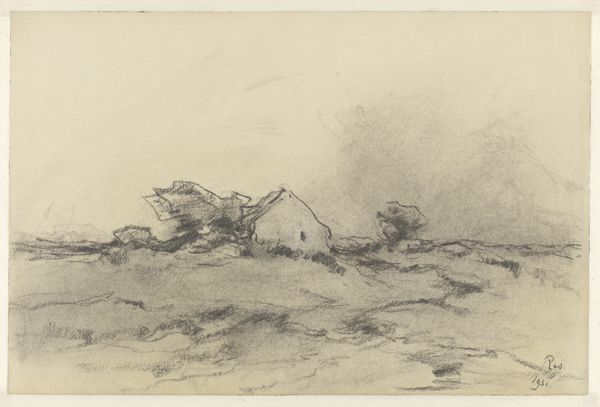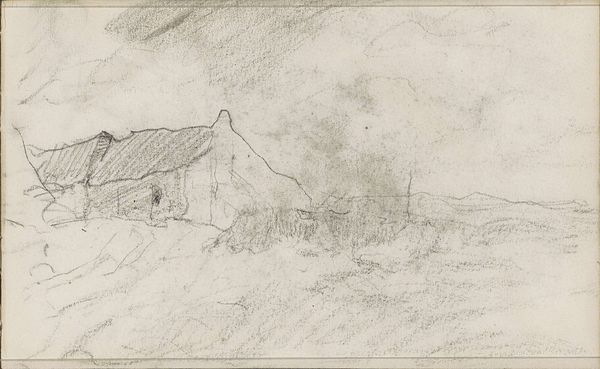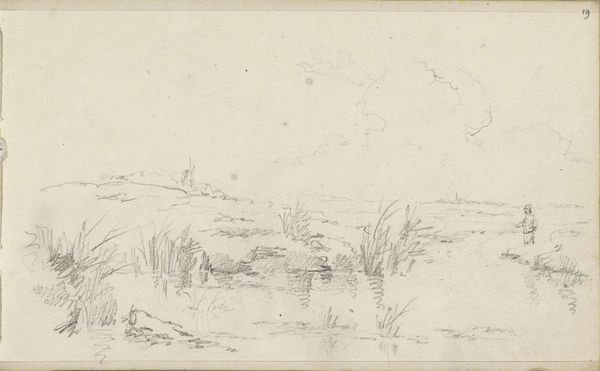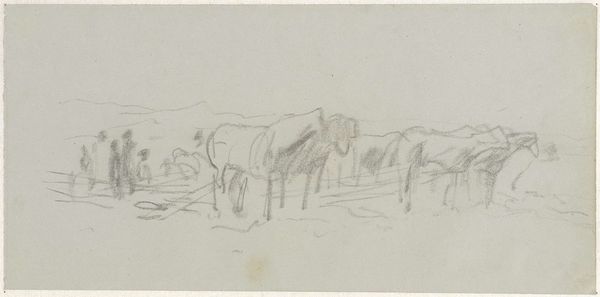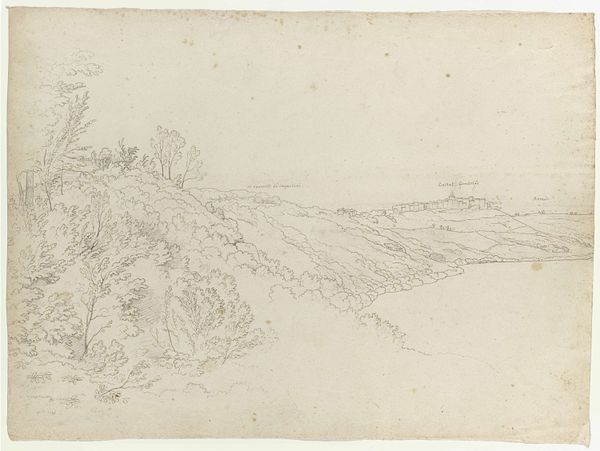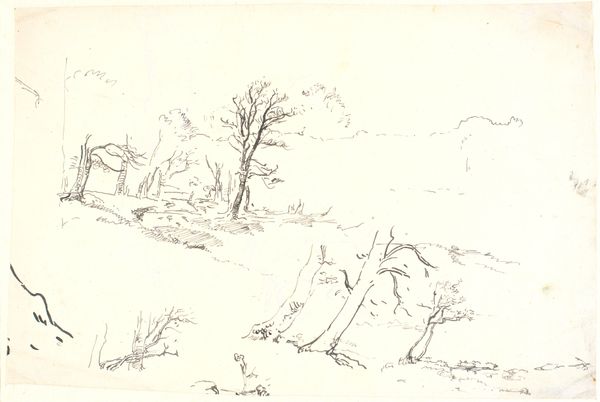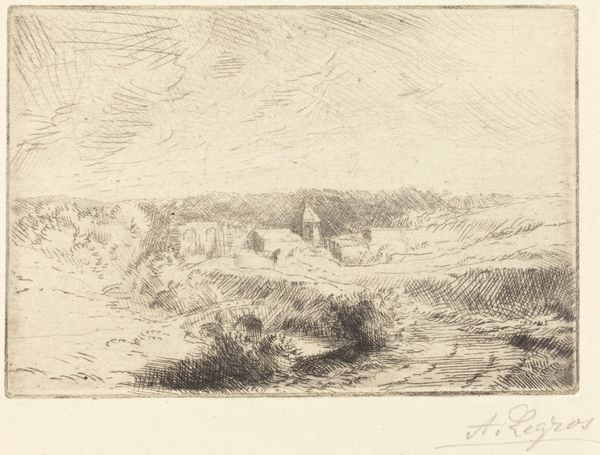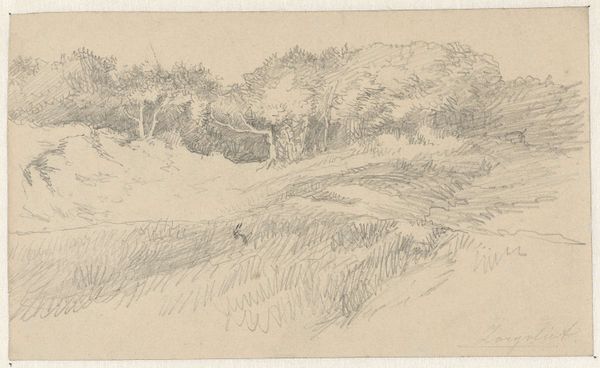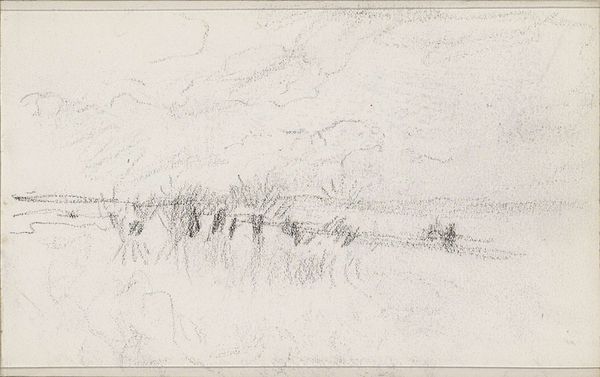
#
light pencil work
#
pen sketch
#
pencil sketch
#
incomplete sketchy
#
personal sketchbook
#
ink drawing experimentation
#
pen-ink sketch
#
sketchbook drawing
#
sketchbook art
#
initial sketch
Dimensions: height 201 mm, width 283 mm
Copyright: Rijks Museum: Open Domain
Editor: This is "Huis in de duinen," House in the Dunes, a pencil drawing by Jozef Israëls. It was made sometime between 1834 and 1911 and now resides in the Rijksmuseum. The hurried lines and starkness make me think it could be a quick study. What can you tell me about it? Curator: It's interesting you note the speed of execution. Think about the context of 19th-century art: rapidly changing social structures, increasing industrialization, and growing urban centers. How do you think an artist like Israëls might respond to that? Editor: Maybe with a sense of urgency to document the old ways of life? Or finding beauty in a rapidly vanishing landscape? Curator: Precisely. Israëls was part of the Hague School, reacting against the academic tradition by focusing on realism and everyday life, especially the lives of ordinary people. The sketch's apparent informality wasn't simply casual. Consider the public exhibition spaces that these artists were aiming to fill. Did the depiction of common dwellings have any political implications? Editor: Maybe it brought the living conditions of the working class into the wealthier public eye? Curator: Exactly. Art was becoming more intertwined with social commentary and a sense of national identity. These apparently simple sketches contributed to a larger dialogue. What seemed like a casual record of a house in the dunes also spoke volumes about the cultural values of the time. Editor: I never would have seen that layered meaning by myself! I’ll have to be more attentive to what’s happening around the artists in order to glean a better sense of socio-political forces and context. Curator: It’s these connections that make art history so compelling, isn’t it? It’s not just about aesthetics, but about how art participates in, and reflects, the world.
Comments
No comments
Be the first to comment and join the conversation on the ultimate creative platform.
